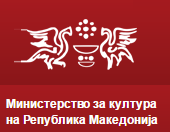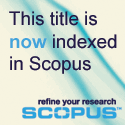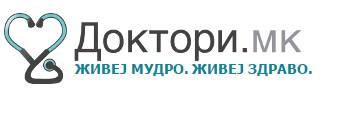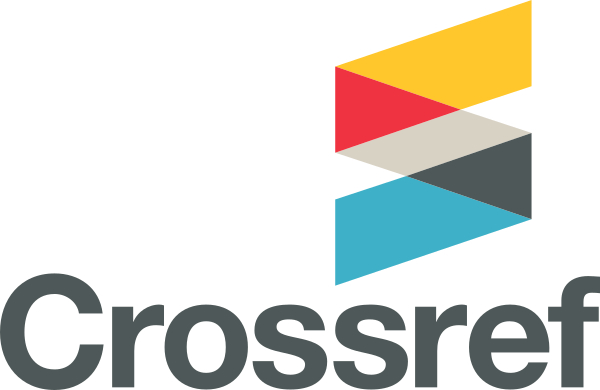JSER Policies
JSER Online
JSER Data
Frequency: quarterly
ISSN: 1409-6099 (Print)
ISSN: 1857-663X (Online)
Authors Info
- Read: 91182
Authors instructions
|
The Journal of Special Education and Rehabilitation. (JSER) (ISSN 1409-6099) is peer review journal edited by the Institute of Special Education and Rehabilitation of the Faculty of Philosophy in Skopje, Macedonian Scientific Society for Autism and the Macedonian Association of Special Educators. The JSER supplies information from different sources such as scientific articles, clinical experiences, survey of cases, reviewed articles, Doctoral Dissertations, Master of Arts, papers and other contributions from all fields of special education and rehabilitation, medicine, psychology, pedagogy and other related sciences. Special educators, medical doctors, psychologists, pedagogues and other employees in the public and private special schools, institutions and health departments in the Republic of Macedonia and outside have the right to publish. Journal of Special Education and Rehabilitation is devoted to the scientific study of disability. The subject matter is broad and includes, but is not restricted to, findings from biological, educational, genetic, medical, psychiatric, psychological and sociological studies, and ethical, philosophical, and legal contributions that increase knowledge on the prevention and treatment of disability, and/or inform public policy and practice. The manuscripts submitted for publication in the journal become permanent ownership of The Journal of Special Education and Rehabilitation (JSER) in Skopje and cannot be reproduced in any manner whatsoever without written permission of the author and the publisher. In English text it is obligatory to write the authors’ name(s) and surname(s) according to the below given example of transcription of Macedonian Cyrillic alphabet into the English Latin alphabet (Table 1). In Macedonian text, the authors’ name(s) and their surname(s) should be written in original alphabet.
|
|
The journal is indexed in: Scopus, Proquest, EBSCO, DOAJ, Crossref, Hinari. |
|
Full text articles are available online at official web site: http://jser.fzf.ukim.edu.mk |
|
|
|
Table 1. Transcription of Macedonian Cyrillic alphabet into English Latin. |
|
|
|
|
Editorial Principles for Authors |
|
|
|
Each author should participate sufficiently in the work to take public responsibility for appropriate parts of the content. One or more authors should take the responsibility for the accuracy of the work as a whole, from inception to publication of the article.
The authorship credit should be based only on (1) fundamental contributions to the concept and to the design, the acquisition of data, or the analysis and interpretation of the data; and (2) the drafting of the article or the critical revision of important intellectual content; and (3) final approval for publishing of the version. Conditions 1, 2, and 3 must be met.
All authors (i.e, the author for correspondence and each co-author) must complete and submit an Authorship Form with signed statements on (1) authorship responsibility, criteria, and contributions; (2) financial disclosure, funding, and support; In addition, the authors are required to identify their contributions to the work described in the manuscript (see Versita Open Access License).
The authors also must certify that the manuscript represents valid work and that neither this manuscript nor one with substantially similar content under their authorship has been published or is being considered for publication elsewhere. If requested, the authors should be prepared to provide the data and must cooperate fully in obtaining and providing the data on which the manuscript is based for examination by the editors or their assignees.
|
Coresponding Address:
Editorial Board of JSER
“Ss Cyril and Methodius” University
Faculty of Philosophy
Institute of Special Education and Rehabilitation
Krste Misirkov bb, 1000 Skopje
Republic of Macedonia
e -mail: jser@fzf.ukim.edu.mk
Role of the Author for Correspondence.
The author for correspondence (or the designated co-author) on behalf of all co-authors will serve as primary correspondent with the editorial office during the submission and review process. The author for correspondence is responsible for ensuring that the Acknowledgment section of the manuscript is complete. “Acknowledgment” is the general term for the list of contributions, approvements, and other information included at the end of the text of a manuscript but before the references. The author for correspondence must sign the statement part for Acknowledgment from the Versita Open Access License.
Group Authorship.
If authorship is attributed to a group (either solely or in addition to 1 or more individual authors), all members of the group must meet the full criteria and requirements for authorship as described above. If that is not the case, a group must appoint 1 or more individuals as authors or members of a writing group who meet the authorship criteria and requirements. The other group members who are not authors may be listed in an Acknowledgment.
Journal of Special education and rehabilitation (JSER) requires all authors and reviewers to declare any conflicts of interest that may be inherent in their submissions. When they submit a manuscript, whether an article or a letter, authors are responsible for recognizing and disclosing financial and other conflicts of interest that might bias their work. At the end of the paper they should acknowledge in the manuscript all financial support for the work and other financial or personal connections to the work.
Authors must indicate whether or not there is a financial relationship between them and the organization that sponsored the research. This note should be added in a separate section previous to the reference list. If noconflict exists, authors should state: The authors declare that there is no conflict of interest.
External peer reviewers should disclose to editors any conflicts of interest that could bias their opinions of the manuscript, and they should disqualify themselves from reviewing specific manuscripts if they believe it appropriate. The editors must be made aware of reviewers’ conflicts of interest to interpret the reviews and judge for themselves whether the reviewer should be disqualified. Reviewers should not use knowledge of the work, before its publication, to further their own interests.
|
REMINDER FOR APPLICATION OF PAPER FOR PUBLICATION |
|
|
|
General notes |
|
Papers submitted for publication in the Journal of Special Education and Rehabilitation are prepared in Macedonian and English Language (bilingual). One copy of the manuscript is submitted (including the photographs and tables) and CD by e-mail, or it can be submitted by the Journal’s Web site, on the following link: http://jser.fzf.ukim.edu.mk/index.php?option=com_proforms&jid=3&cid=1&Itemid=89. The manuscript must be typed in spacing 1.5 lines on one side of 80 g white paper, format A4 (21 x 29 cm) only with at least 2 cm margin. The manuscript have to include the following sections listed in identical order: title page, abstract, introduction, materials and methods, results, discussion, reference, legend, illustration and tables. |
|
|
|
First page |
|
Title, then authors’ names (including the names, middle names and surnames and the academic degree), then short title with no more than 45 letters, (with no abbreviations), the name and the address of the institution where the paper is prepared (if there are several, they are noted by numbers in the same order as for the authors. Information whether the paper is presented somewhere, as well as supported by some project or institution are also given (with the project’s number and its full name of the institution and the place). Under the institution the author has to state the type of the paper (whether it is scientific article, clinical experience, survey of cases, reviewed article, Doctoral Dissertations, Master of Arts, papers and other) the author should Under the type of the paper, the author should state how many pages do the paper contain, how many characters without space, number of tables and illustrations. Close to the text: contact address: first name, surname (e-mail address in parenthesis) and full address where the copies are to be sent, together with telephone number (private and at work) for eventual consultation. Authors who normally write their names in non-Latin may include their names in their native writing system and immediately in parentheses include a transliterated version in Latin alphabet. |
|
|
|
Abstract |
|
Abstract consisting of 150 to 250 words for papers and 50 to 100 words for case reports must be typed in double spacing on a separate sheet as second page of the paper. The content of the abstract should be essential and independent whole, and it should not describe what is presented in the paper. The abstract should be properly structured, including short introduction, goals of the paper, methodology (selection of the sample, the way of data collecting and data processing), most important results and conclusion. (“WRONG" the results of the coronary stress test of the workers 'in the textile industry are presented", but "the maximal oxygen consumption of the workers in the textile industry was 31,5 ± 6,2 mL*kg-1.min-1). The text is to be written in a passive form (not "we" or "our"). Abbreviations other than the standard units for measurement and their derived units should not be given. The abstract should not contain references. At least three key words should appear under the abstract. |
|
|
|
Manuscript preparation |
|
Articles typically consist of 30.000 characters with no space, beginning with up to 500 words in the referenced text expanding on the background to the work (some overlap with the summary is acceptable), before proceeding to a concise, focused account of the findings, ending with one or two short paragraphs of discussion. The text may contain a few short subheadings (not more than six) and not more than 40 characters each (less than one line of text in length). Articles typically have 5 or 6 display items (figures or tables). 1. Titles do not exceed three lines in print. Titles do not normally include numbers, acronyms, abbreviations or punctuation. They should include sufficient detail for indexing purposes but should be general enough for readers without knowledge in the field could estimate what the paper is about. 2. Methods. In the Methods section, details regarding the material, samples, methods and equipment used in the study should be included, so that another individual could repeat the work. The selection of the observational or experimental participants (patients or laboratory animals, including controls) should be stated clearly, including eligibility and exclusion criteria and a description of the source population. Next, the period of research and the institution where it was conducted should be clearly mentioned. Papers covering research on human or animal subjects should contain a statement indicating patient permission and clearance by the institute research or ethics committee or animal experimentation committee. The methods, apparatus (including the manufacturer’s name and address in parentheses), and procedures should be given in sufficient detail to allow reproduction of the results. References for the established methods should be given, including statistical methods; references and brief descriptions of methods that have been published but are not well known should be provided; new or substantially modified methods should be described, reasons for using them should be given, and their limitations should be evaluated. All used drugs and chemicals, including generic name(s), dose(s), and route(s) of administration should be precisely identified. The Methods section should not exceed 1,000 words. The Methods section cannot contain figures or tables. 3. Results. In this section the author should describe the main findings in the text as well as the particular statistical significance of the data, and direct the reader to the tables and figures, implying that details are shown there. Information on significance and other statistical data should preferably be given in the tables and figures. Do not combine the Results and Discussion sections for full-length papers. 4. Discussion. This section should not repeat the results. The discussion section should discuss the study findings, and interpret them in the context of other trials reported in the literature providing evidence or counterevidence. In this way the validity of the results and the significance of the conclusions for the application in further research are assessed, with respect to the hypothesis, relevance of methods, and significance of differences observed. 5. References. Each reference should be numbered, ordered sequentially as they appear in the text, methods, tables, figures, and legends. When cited in the text, reference numbers are in parenthesis. The maximum number of references is 50 for articles and 30 for brief announcement. Only one publication can be listed for each number. Each table, photograph or literature data are cited in the text in Arabic numerals (they should appear in the text by number only in the order in which they occur). We follow the "Uniform requirements for manuscripts submitted to biomedical journals" (also called the Vancouver style, determined by the International Committee of Medical Journal Editors and used for PubMed/Medline journals. The first reference in the text should be (1), the next (2) and so forth and then listed accordingly at the end of the paper after the discussion or after the acknowledgements. 6. Legend. A legend for each table, picture and illustration must be included in the manuscript document after the reference list. Legends should include sufficient detail to be intelligible without reference to the text. Legends must define all symbols and include essential information, such as scale bar dimensions. |
|
|
|
Manuscript Types |
|
Manuscript types are: editorial; a letter to the editor; original articles (research or theoretical); evidence-based research abstracts, best practice, or clinical practice guideline original articles or summaries; case reports; book reviews; announcements of upcoming events/conferences; and Master’s and doctoral thesis. Authors must specify the type of the manuscript for each submission depending on its content and focus. Submissions for which the type of the manuscript is not specified will be decided by the Editor. Editorial. Editorials will be written by the Editor or a member of the Editorial Board approved by the Editor. Authors interested in writing an editorial must receive approval by the Editor. They are encourages to send letters to the Editor. Original Articles. Each original article must include a title page (article’s title, name, credentials, affiliations, and contact information for the primary author), abstract, manuscript text, and reference list. The abstract should consist of 250 words or less. The length of original articles should not exceed 20 pages. Research Announcements. The purpose of a research announcement is to provide an prompt information of current research findings or a brief overview of current and recently published research articles. The research announcements provide a narrative summary of current research findings, specifically detailing the research question(s), design, data collection, findings, and recommendations. The length of a research announcement should not exceed 3 pages. Original Articles or Summaries or Clinical Practice Guideline based on Evidence or Best Practice,. Articles with synthesis of original literature or best practice principles with recommendations for practice based on evidence for men's health issues are encouraged. The practice principles based on evidence or clinical practice that are published through another medium can be summarized in JSER after approval from the primary copyright agency. Case Reports. Case reports describe individual clinical situations or events that have broader implications on men's health and exemplary practice. Authors must maintain individual privacy and confidentiality in presenting clinical situations. Case report manuscripts must comply with APA format. Papers consisting of maximum 6 pages will be accepted. Illustrations and photographs must be accompanied by written permission for utilization with distinguishing individual features eliminated. A maximum of 6 pages will be accepted. Review Articles. Articles that integrate policy-related research, particularly across disciplines. Submissions in this category are judged for their thoroughness, fair reporting, and interpretation of others’ research and for their contribution to the scientific field. Systematic Reviews of up to 4,500 words are suitable for submission. Authors submitting a systematic review are encouraged to assess the quality of their article against the PRISMA checklist prior to submission (http://www.prisma-statement.org/2.1.2%20-%20PRISMA%202009%20Checklist.pdf). Controversies related to the special education and rehabilitation (persons with disabilities). Controversies focus on current issues, contradicting the attitudes, findings and contributions of prominent experts or researchers covering topics from basic special education and rehabilitation to clinical and more ‘applied’ areas. They necessarily represent an opinion, but are founded on factual evidence. Each Controversy comprises: 1) a proposal for a particular view; 2) a presentation of a contrasting view; and 3) an overview/summary. The two opposing views comprise about 1,000 words each, supported by 5-10 key references. Controversies are generally by invitation. Book Reviews. Descriptive book reviews on men's health issues are encouraged to provide an awareness of the professional and laic publications regarding men's health. Book summaries should provide a descriptive overview/outline of the book, a content summary, critique, and recommendations regarding reading. The length of the book reviews should be limited to 4 pages. Announcements of Upcoming Events/Conferences on men's health issues will be published with the appropriate information regarding, title, place/location, time, and contact information. Master and doctoral thesis should be prepared as an original research report and should include a section stating the date, place and the commission responsible for the evaluation of the thesis. The Master and the doctoral thesis are enrolled in the peer-review process only after the public defense has been successfully accomplished. |
Table 2. Characteristics of different type of papers
|
|
|
Literature |
|
Personal transcript, the manuscript in the preparation and other unpublished information are not quoted under literature, but rather, they could be mentioned in the text in parenthesis. The literature index is quoted with Arabic numbers in parenthesis; parallel with single spacing and according to the order they are mentioned in the text. The journal contains the pages of the article; whereas the books contain a specific page number. The abstract are market with the abbreviation (absts.), and the letter are marked with (letter) in small brackets. The abbreviations of the journals are in accordance with those quoted in the Index Medicus, National Medical Library of America. The way of quoting is given in the example below. |
|
|
|
Journals |
|
All authors are quoted whether there are 6 or less; if there are more authors, the first three authors are quoted and sor is added at the end of a Macedonian text, and et al. at the end of an English text; full stops are not used after the initials and the abbreviations of the journal). 1. Karanfiloski A, Trajkovski V. Sexual education for persons with intellectual disabilities. Journal of Special Education and Rehabilitation 2008; 9(1-2): 55-66. |
|
|
|
Heading in a book |
|
17. Vittliff JL, Savlov ED. Estrogen-binding capacity of cytoplasmic forms of the estrogen receptors in human breast cancer. McGuire WL, Carbone PP, Volmer EP, eds. In: Estrogen receptors in human breast cancer. New York: Raven Press, 1975:73-91.
Book (one or more authors) 42. Shek DTL, Ma HK, Merrick J. Positive youth development. Development of a pioneering program in a Chinese context. Tel Aviv: Freund, 2007. |
|
Research report |
|
Shek DTL. A positive youth development program in Hong Kong. Hong Kong: Soc Welfare Pract Res Centre, Univ Hong Kong, 2004. [Chinese] |
|
Unpublished thesis |
|
Kaplan SJ. Post-hospital home health care: The elderly’s access and utilization. Dissertation. St Louis: MO: Washington Univ, 1995. |
|
Online Journals (journal article) on Internet Seal A, Kerac M. Operational implications of using 2006 World Health Organization growth standards in nutrition programmes: secondary data analysis. BMJ [Online]. 2007 [Cited 2007 Apr]; 334:733. Available from: URL: http://www.bmj. com/cgi/content/full/334/7596/733. |
|
Internet material FDA/CEDR resources page. Food and Drug Administration [Online]. 2007 [Cited 2009 Apr]. Available from: URL: http://www.fda.gov/cder/approval/index.htm. |
|
Writing Style 1. Articles should be written in English (spellings as in the Oxford English Dictionary), and Macedonian language, 1.5 lines spaced, using proper alignment, Times New Roman font, and 12-pt. type. An abstract should not consist of no more than 250 words, include the title of the paper, and 3 to 5 keywords. Cyrillic names should be transliterated for in Latin see: (Table 1) 2. Set all margins to 2 cm. 3. Format for A4 paper. 4. Subtitles should be in Times New Roman 12 pt, bold with left alignment, each part to be separated with a subtitle (introduction, materials and methods, results, discussion, reference and other). 5. The text should not be written with same font-all capital or lowercase. 6. All figures and tables should be put in a separate file. The location of tables and figures in the text is emphasized in bold, enclosed in angle brackets, on a separate line.
Example: 7. General alignment, paragraph indents is made by using the tab-button and the functions for centering etc. DO NOT USE THE SPACE BUTTON 8. Endnotes should be used less. They can be numbered with Arabic numerals starting with 1 and continuing through the article; for example: “(See Note 1).” Do not use footnotes. |
|
Artwork Figures must be provided ready for production. Do not use rules or tick marks smaller than 1 point in size. Acceptable electronic formats for figures or other art are: TIFF, EPS, Word, or Excel. If you have trouble loading Excel files, copy and paste them into a Word document. Scans must be at least 300 dpi. Scans done at lower resolutions will have a very poor print quality even if they look crisp and clear on a laser printout. Increasingly many readers prefer to read articles on the web. Therefore, you need to visualize how the article will look on the web, not just on paper. You should try to use the advantages of web publishing such as links to other sources of information, extra photographs, figures, tables, or sometimes even a short video. The figures should be pointed same as pictures, with the number of the picture and title in Times New Roman, italic, immediately below the picture. Each picture must be accompanied by a legend, accurately explaining the picture. |
|
Tables The tables are typed out on a separate sheet of paper in double spacing with the number and the name of the table, whereas the explanations should be given below the table. The number of the table should be market with Arabic numbers and consequently given in the same order as they are mentioned in the text. The contents of the heading, the columns, the lines as well the explanations must be given in both Macedonian and English. The title of the tables should be written in Times New Roman, italic. Tables should be presented classically, with clearly pointed: header, pre-column, rows and columns. In the tables should be used standard abbreviations, pointed with star in superscript, and the same one should be explained immediately below the table and more detail in the legend. |
|
Table 3. Example of standard presented table |
|
|
|||||||||||||||||||||||||||||||||||||||||||||||||||||
The heading of the columns should be given in abbreviated form, and an explanation of it under the table. The order of their explanation should be according to the Macedonian alphabeth (or the abc of the Englich text) for all the abbreviations in the table.
The tables themselves are quite clear, therefore, there is no need to contain information already given in the text or in the graphs. Tables with just one line should be avoided.
The horizontal and the certial lines should be brought to an indispesable measure, whilst the insignificant decimal places to be avoided.
It is indispesable to give the statistical measures of varation (standard deviation, standard error, etc.).
Patient consent
Publication of any personal information about an identifiable living patient requires the explicit consent of the patient or guardian. Patients have a right to privacy that should not be infringed without informed consent. Identifying information, including patients' names, initials, or hospital numbers, should not be published in written descriptions, photographs, and pedigrees unless the information is essential for scientific purposes and the patient (or parent or guardian) gives written informed consent for publication. Informed consent for this purpose requires that a patient who is identifiable be shown the manuscript to be published. Authors should identify Individuals who provide writing assistance and disclose the funding source for this assistance. The requirement for informed consent is according ICMJE principles (please see more at www.icmje.org).
You must have signed informed consent from patients (or relatives/guardians) before submitting to JSER Case Reports. Please anonymise the patient’s details as much as possible, eg, specific ages, ethnicity, occupations. For living patients this is a legal requirement and we will not send your article for review without explicit consent from the patient or guardian.
If the patient is dead the Data Protection Act does not apply, but the authors must seek permission from a relative (ideally the next of kin).
If you don't have signed consent from a deceased patient, guardian or family, the head of your medical team/hospital or legal team must take responsibility that exhaustive attempts have been made to contact the family and that the paper has been sufficiently anonymised not to cause harm to the patient or their family. You will need to upload a signed document to this effect.
Statement of Human and Animal Rights
When reporting experiments on people, authors should indicate whether the procedures followed were in accordance with the ethical standards of the responsible committee on human experimentation (institutional and national), or if no formal ethics committee is available, with the Helsinki Declaration as revised in 2008 (link to www.wma.net/en/30publications/10policies/b3/index.html).
If doubt exists whether the research was conducted in accordance with the Helsinki Declaration, the authors must explain the rationale for their approach and demonstrate that the institutional review body explicitly approved the doubtful aspects of the study. Please see more at ICMJE web site: www.icmje.org.
Clinical Trials
Clinical trials should be reported using the CONSORT guidelines available at www.consort-statement.org. A CONSORT checklist should also be included in the submission material (http://www.consort-statement.org/mod_product/uploads/CONSORT 2001 checklist.doc).
Manuscripts reporting results from a clinical trial must provide the registration number and name of the clinical trial. Clinical trials can be registered in any of the following free, public clinical trials registries: www.clinicaltrials.gov, clinicaltrials-dev.ifpma.org/, isrctn.org/. The clinical trial registration number and name of the trial register will be published with the paper.
Conflict of Interest and Source of Funding
Conflict of Interest: Authors are required to disclose any possible conflict of interest. These include financial (for example patent, ownership, stock ownership, consultancies, speaker’s fee). Author’s conflict of interest (or information specifying the absence of conflicts of interest) will be published under a separate heading entitled ’Conflict of Interests’.
The Journal of Special Education and Rehabilitation requires that sources of institutional, private and corporate financial support for the work within the manuscript must be fully acknowledged, and any potential conflicts of interest noted. As of 1st September 2013, this information was required for all manuscripts submitted to the Journal and it is published in a highlighted box on the cover page of the article. Please include this information under the separate headings of 'Source of Funding' and 'Conflict of Interest' at the end of your manuscript.
If the author does not include a conflict of interest statement in the manuscript then the following statement will be included by default: “Authors declare no conflicts of interest”.
Source of Funding: Authors are required to specify the source of funding for their research when submitting a paper. Suppliers of materials should be named and their location (town, state/county, country) included. The information will be disclosed in the published article.
Statistics
Numerical data should be analysed using appropriate statistical tests. Define all statistical measures and models unambiguously and include a relevant analysis of the statistical probabilities and software or statistical packages used. Identify the number of independent replications of experimental treatments and the number of times individual experiments were duplicated. Provide detailed information for each statistical test applied including: the type of test; degrees of freedom; population size; definition of population (e.g., number of individual measurements, number of animals, number of slices, number of times treatment was applied, etc.); and what correction, if any, was used to adjust for multiple pairwise comparisons. Probability values should be denoted as p. Do not report p-values to more than two places after the decimal. Actual p-values are preferred to the use of the terms “significant” and “highly significant”, for p < 0.05 and p< 0.01, respectively. Avoid the ambiguous use of p > 0.05 to declare non-significance.
Manuscript screening for originality
Since 2010, Journal of Special Education and Rehabilitation has joined an initiative by iThenticate (http://www.ithenticate.com/) to prevent scholarly and professional plagiarism in scientific publications. This initiative provides its members a service to screen received content for originality against a vast database of relevant published material. All manuscripts submitted to JSER are screened using iThenticate, not because JSER wishes to police authors, but because we are aware of the difficulties they encounter in presenting their own research, non-native English speakers in particular. Our role here is to help by making them aware of the problem.
Charge
No charge will be require or impost to the authors.
Share Us
Journal metrics
-
 SNIP 0.059
SNIP 0.059 -
 IPP 0.07
IPP 0.07 -
 SJR 0.13
SJR 0.13 -
 h5-index 7
h5-index 7 -
 Google-based impact factor: 0.68
Google-based impact factor: 0.68
10 Most Read Articles
- PARENTAL ACCEPTANCE / REJECTION AND EMOTIONAL INTELLIGENCE AMONG ADOLESCENTS WITH AND WITHOUT DELINQUENT BEHAVIOR
- RELATIONSHIP BETWEEN LIFE BUILDING SKILLS AND SOCIAL ADJUSTMENT OF STUDENTS WITH HEARING IMPAIRMENT: IMPLICATIONS FOR COUNSELING
- EXPERIENCES FROM THE EDUCATIONAL SYSTEM – NARRATIVES OF PARENTS WITH CHILDREN WITH DISABILITIES IN CROATIA
- INOVATIONS IN THERAPY OF AUTISM
- AUTISM AND TUBEROUS SCLEROSIS
- THE DURATION AND PHASES OF QUALITATIVE RESEARCH
- REHABILITATION OF PERSONS WITH CEREBRAL PALSY
- DISORDERED ATTENTION AS NEUROPSYCHOLOGICAL COGNITIVE DISFUNCTION
- HYPERACTIVE CHILD`S DISTURBED ATTENTION AS THE MOST COMMON CAUSE FOR LIGHT FORMS OF MENTAL DEFICIENCY
- DIAGNOSTIC AND TREATMENT OPTIONS IN AUTISTIC SPECTRUM DISORDERS – AN OVERVIEW
















